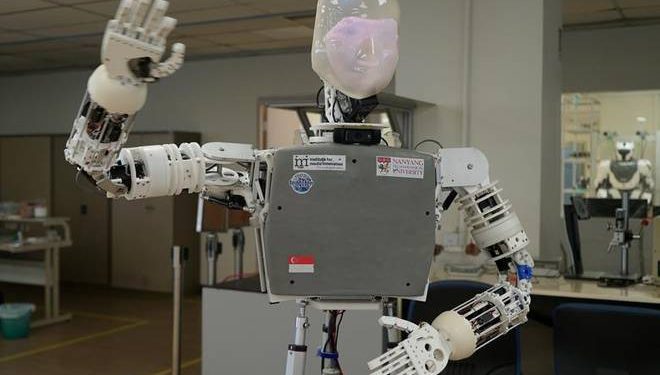In the age of innovation and technology, more businesses are creating human-like robots that do human-like tasks in the hospitality and customer service industries. These “Android” or Advanced Humanoid Robots are devices made to carry out human functions including interacting, conversing, walking, and more.
Because to their significant contributions to robotics research and numerous other uses in the twenty-first century, humanoid robots have the greatest potential to develop into useful industrial tools. These humanoid robots are being improved in many ways to closely resemble people thanks to AI developments in robotics. Although they may also serve functional purposes, they were created to mimic the human body. Humanoid robots have many different uses, including in education and entertainment, personal support, manufacturing and maintenance, search and rescue, healthcare, and other fields. According to recent reports, Hanson Robotics’ Sophia and Honda’s Asimo are the most intelligent and technologically advanced robots, respectively.
Several Humanoid Robots have been commercialized thanks to the advancement of AI technologies; the top 5 most sophisticated Humanoid Robots in the world in 2023 are mentioned below:
SOPHIA (HANSON ROBOTICS)
The most sophisticated humanoid robot, Sophia, created by Hanson Robotics, made her debut in 2016 and enthralls audiences everywhere. Sophia is the first robot citizen in the entire world and the first robot Innovation Ambassador for the United Nations Development Program. In addition to her appearances on the Tonight Show and Good Morning Britain, she also gave presentations at numerous conferences throughout the world. Sophia is a platform for cutting-edge robotics and AI research, helping to comprehend human-robot interactions and their applications in services and entertainment. Sophia was built by Hanson Robotics, a Hong Kong-based corporation, to resemble the well-known Hollywood actress Audrey Hepburn so that she may serve as an elderly companion in nursing homes or a crowd controller at events. She is equipped with neural networks and AI that can detect faces of people and comprehend their gestures and emotions. By participating in high-profile interviews, events, and other debates all over the world, Sophia wins over the public as their favorite.
ATLAS (BOSTON DYNAMICS)
Boston Dynamics created Atlas in 2013 with a focus on locomotion, first walking in the lab, then walking on all kinds of unstable terrain and pulling off some sick Parkour moves. With financing from the United States Military Advanced Research Projects Agency, the business launched Atlas (DARPA). In addition to spotting obstructions in the way, avoiding them, bouncing, and somersaulting, Atlas is also capable of other gymnast-like body motions. Atlas uses model predictive control technology to enhance motion and depth sensors for real-time perception. A colored point cloud is created by two sensors, a color camera, and a Lidar module, as seen by Atlas.
AMECA (ENGINEERED ARTS)
Engineered Arts produced Ameca, the most sophisticated and lifelike humanoid robot ever, in 2021. Ameca’s first video was made available to the public on December 1, 2021, and it quickly gained popularity on Twitter and TikTok. Its main goal is to operate as a platform for the development of human-robot interaction-related robotics technology. In order to communicate with the public, AMECA uses embedded microphones, binocular eye-mounted cameras, a chest camera, and facial recognition software. Interactions can also be managed via GPT-3 or human telepresence. The technology used to create its prosthetic ligaments, limbs, and sensor arrays is state-of-the-art.
NADINE (KOKORO)
In 2013, the Japanese startup Kokoro created Nadine, an empathic robot that responds to welcomes, maintains eye contact, and retains all remarks and dialogues with the user. She exhibits human-like emotions, a temperament, and personality. She was produced using innovative technologies to simulate human behavior. To gather visual and aural inputs, Nadine features a webcam, a microphone, and 3D depth cameras. These inputs are processed by several perceptual layers, which identify distinct faces, gestures, emotions, and behaviors for analysis and appropriate response. She created a memory model and chatbots to remember distinct users and the discussions they had with her. Nadine also speaks Hindi, French, Japanese, Chinese, and six more languages effortlessly.
ASIMO (HONDA)
A humanoid robot called ASIMO, or Advanced Step in Innovative Mobility, was developed for search and rescue operations. It is able to engage with people because it can distinguish moving objects, postures, gestures, and the environment in addition to voices and faces. Asimo has two camera eyes on his head that record visual data for determining distance and direction and detecting the movement of various objects. ASIMO can distinguish between voices and other sounds, which allows it to identify its friends. It can identify nearly 10 different faces and reply to queries by nodding and speaking in multiple languages. It can also address people by name.









